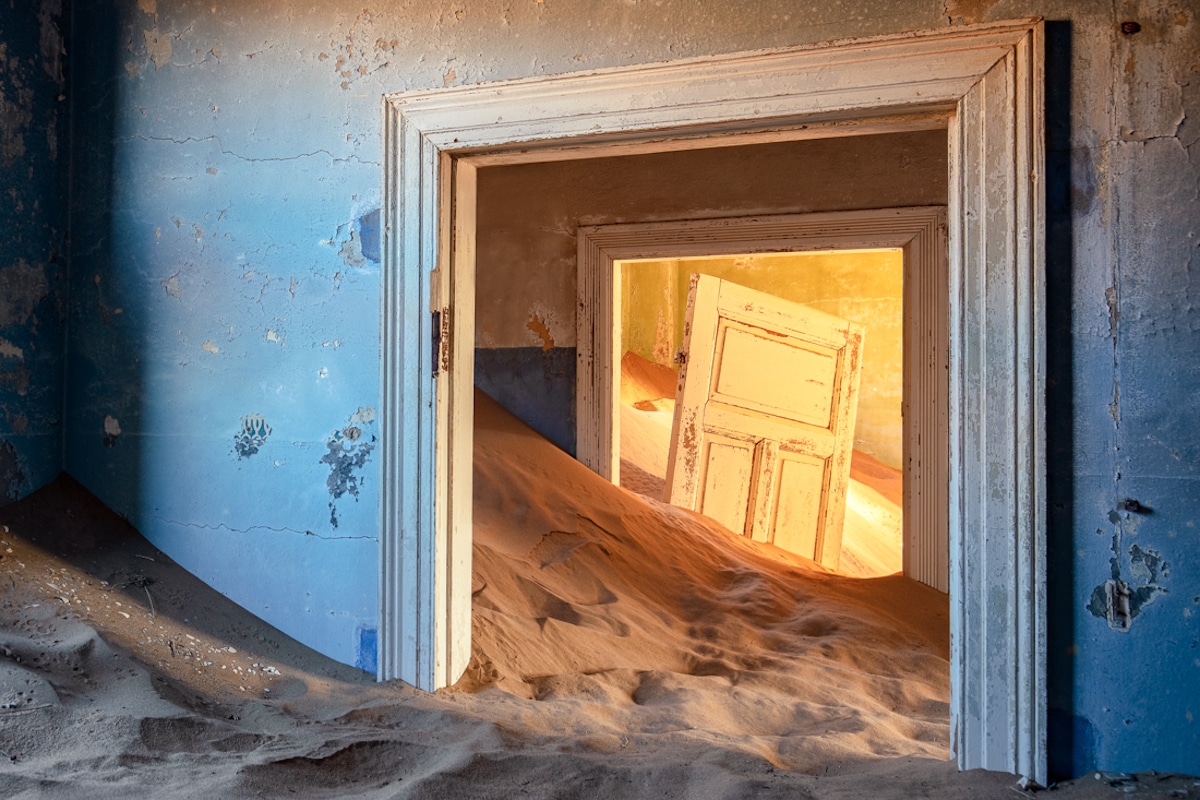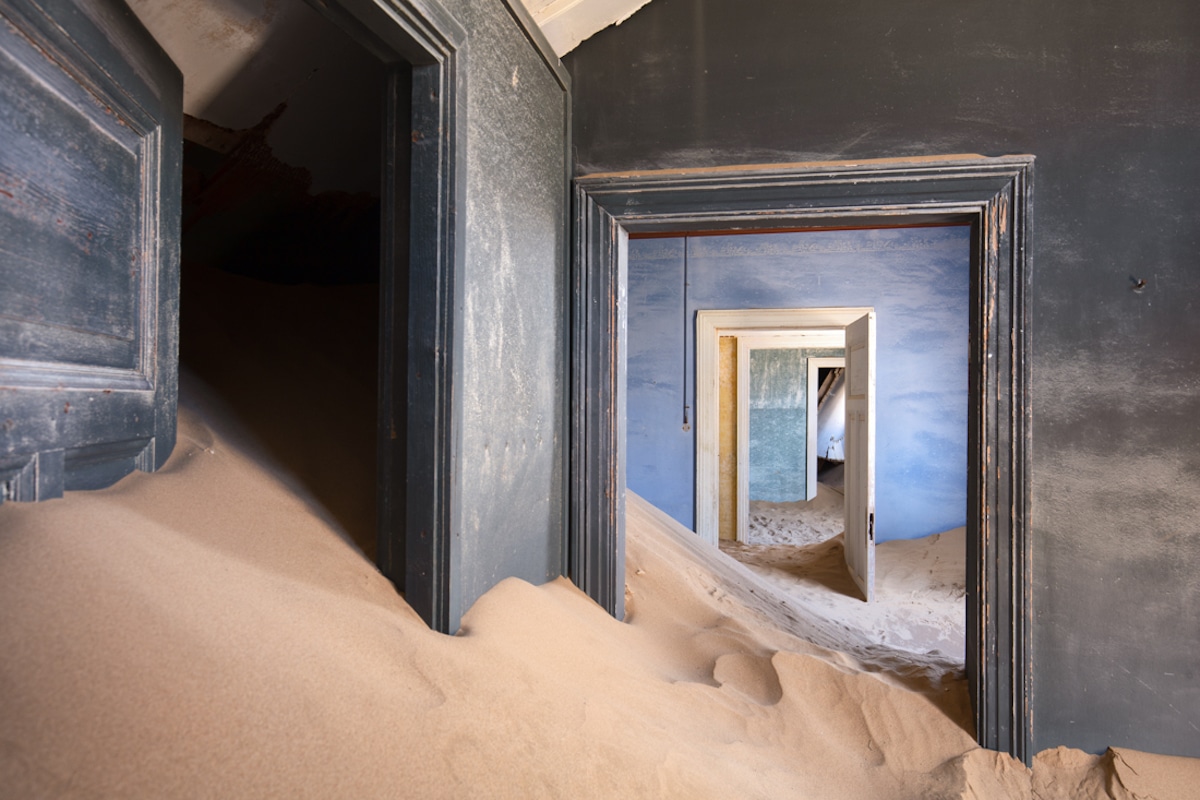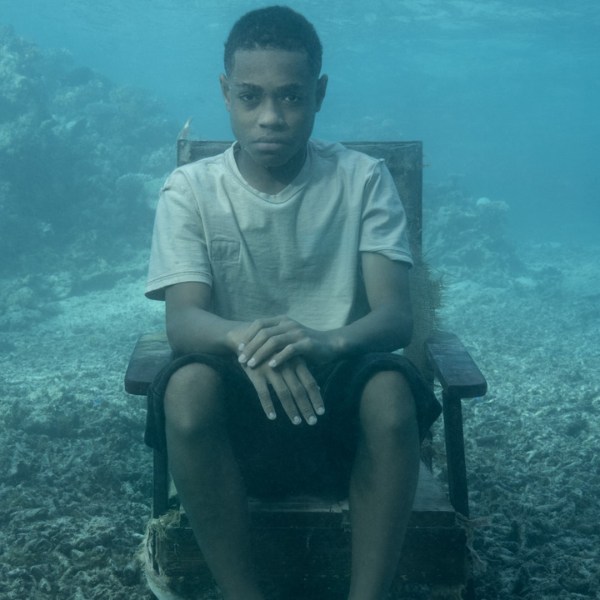
Self-taught photographer James Kerwin spends his time behind the lens capturing stunning images of abandoned spaces and neglected relics and ruins. Hailing from Norwich in the UK, he has since left his home to travel the world, capturing some of the most remote, unique, and beautiful locations that this planet has to offer. Now based in the region of the world where Europe and Asia meet, the travel photographer has embarked on his latest series called Uninhabited.
An ongoing project which Kerwin plans to pursue over the next four years, Uninhabited will transport viewers to ghost towns, villages, and cities all over the world. The incredible images he’s captured so far—in the sandy deserts of Namibia and the Middle East, as well as in the city of Pripyat in Ukraine—offer a singular view into the beautiful and peculiar solitude of these locales.
We had the chance to chat with Kerwin about his newest series Uninhabited and his experiences during his travels photographing these ghost towns. Read on for My Modern Met's exclusive interview.

You purchased your first camera after spending some time in Australia. Was photography something you were always interested in, or was there something about your time in Australia that spurred you on?
I was made redundant in the UK in March 2009 and decided to travel through Southeast Asia and worked in Melbourne, Australia until April 2010. Upon leaving to return to the UK, I went via Hong Kong and Thailand en-route. While in Melbourne, I lived with a German guy that was really into photography. He inspired me to pop down into Queen Victoria Market in the city to pick up a camera.
I believe anyone into photography ends up wanting to travel (at least at some point to see parts of an area away from your home or country). And anyone into travel ends up liking photography as you want to capture (at least memories) of your travels.
Travel really drew me to photography, and from that point on, I taught myself more once back in the UK. But for the next seven years, it played second fiddle to work at events and a marketing agency based in the UK. It maybe clashed at times, but I certainly didn’t take it for granted. I owe a lot to the knowledge I gained there. A lot of it applies to my photography practices these days, now that I am a full-time professional.

How do you feel your photography style has evolved over the years?
I love color, detail, and pulling the best out of architecture. Since I found that genre, I am always looking into new ways to develop my works. Slowing down is key—finding new and interesting subjects, of course, is another. I would say my style has developed into something that I enjoy producing, but I will not stop here. I am a believer in looking at all art and photography types for your inspiration and continuing my own development. My portfolio definitely shows a progression.

Your photography series mainly focus on abandoned locations, structures, and ruins—oftentimes overcome by the effects of nature. What draws you to these types of locations and drives you to want to photograph them?
Texture, detail, and color is a huge draw. However, I am a firm believer that the heritage that surrounds us should be preserved a little more than it is; some of it is magical and beautiful. But not all that I photograph is abandoned—not at all. Many interiors are simply hidden in the cities that surround us, and—shocking as it may seem—many of my recent shots are in locations that are still either partly or fully used for one activity or another.

One of the most stunning aspects of your latest collection is seeing these structures almost completely buried in the sand! Can you tell us a little bit more about your latest series Uninhabited and what it has been like traveling to these “ghost towns” and photographing them?
The series was originally designed to be shot primarily to feature across my YouTube channel. It’s easier to access, fly drones, and create films inside an abandoned location such as a palace. These spaces are sometimes stunning, and there are hundreds of ghost towns, cities, and villages around the world.
Some of these towns are extremely difficult to reach—either within the globe or in remote locations—others are more known, such as Pripyat in Ukraine. But the travel is always the fun part of the adventure, getting to these odd areas of the world—deserts and spaces that are unusual.

Any future locations you’re headed to that you can share with us?
I wish to visit a few towns in South America and the Caribbean as well at some point. And, travel permitting, I do plan to continue the series. As a freelancer, I can travel as the time suits really. But I do like to plan everything extremely well and allow plenty of time for errors or travel complications. That will occur more in the future of course, as the new world may be slightly different.

Do you have a favorite place you’ve traveled to? Being that you’ve been to so many places, what was it about that particular place that makes it so special?
I love Southeast Asia, but having visited Myanmar in February and March 2020, it was a very eye-opening and special region. South Africa was beautiful, and Taiwan is opposite to anywhere in the West. Italy and my current location—Georgia—and Namibia are stunning. But each of these is vastly different, of course. It is part of the draw—the culture and, of course, the differing heritage spaces. A few of the behind-the-scenes journeys are on my YouTube channel.

You also do guided photography tours and workshops. When did you decide to start doing those, and what has that process been like?
I launched my off-the-beaten-path photography tours in 2018, and I ran five week-long trips through Georgia in 2019 for guests from all over Europe and the U.S. These tours were due to expand into other countries in this region in 2020 and 2021. As things have improved, I have decided to now base myself full-time out of the region as opposed to traveling full-time, which will help me produce better trips.
I’ve loved the process. And this is what I referred to earlier when I mentioned the events industry providing me a decent grounding of understanding of how to run successful trips and how to show others new skills. When setting them up, I knew they would be a fun challenge and provide me a way of giving something back to the communities that have provided me so much pleasure in the past.

(continued) I love experiencing new and unusual countries, and I wanted to provide others with these experiences as well. That includes showing people hidden architecture, heritage in unusual cities, and locations hidden in rural areas of the chosen destination. The idea was to provide a real mix, and they are something a little different.

I’m sure this past year has had a great impact on your overall ability to do what you do. What has it been like adapting your business and practice during the global pandemic and its repercussions?
I run online teaching and talks to camera clubs and through different creative platforms as of March 2020. Also—with people sitting in their homes more—our priorities have changed somewhat. People have been decorating and fitting out homes, which also includes maybe buying artwork or limited-edition prints. It is always a nice gesture when an individual loves your work enough to showcase it in their own home.
Lack of tourism has delayed my larger rollout plans, but the pandemic has only proceeded to inspire and motivate me a little more. Travel will return…























































































